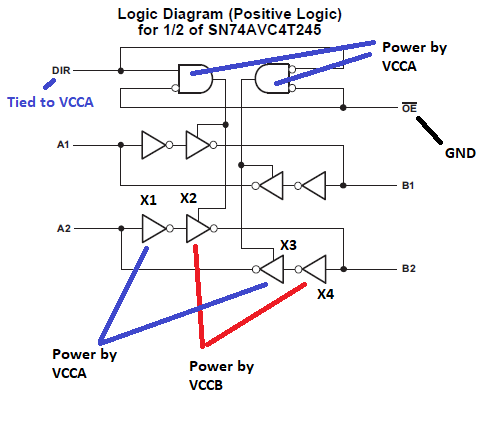Other Parts Discussed in Thread: SN74AXC4T245, SN74AVCH4T245, TXB0104
Hello team,
Hope you are doing well and staying safe. When you get a chance please provide feedback on below from customer:
We are using SN74AVC4T245 (SN74AVC4T245RGYR) in our design and the contract manufacturer has reported a number of cases where the board is using elevated current. It seems that they have traced this back to this component. Replacement of this component clears the excess current issue and putting the replaced component onto a known good board causes that board to exhibit the same excess current. My understanding is that they have taken 197 samples from the reel and applied 3VDC from pin16 VCCB to pin8 GND and found that 25 of them are drawing >4mA of current which is orders of magnitude larger than I would have expected. The state of the IC in our application when we are concerned about quiescent current is when VCCB is 3VDC and VCCA is off. Unless I’m missing something the total draw in this situation should be microAmps. I don’t think there is any residual voltage on VCCA but would be cause elevated current?
Also is the test the contract manufacture performed valid or should they connect the ground reference to both pins 8 and 9? Could floating IO lines be a cause for this?
“A side” is normally powered 1.8V 100nF, “B side” normally 3V 10uF
B is on whenever A is on
A and B are sometimes both off
A turns on subsequent to B turning on; A turns off before B turns off
“A side” connects to a cellular module, “B side” connects to an MCU
VCCA has a 100k pulldown in addition to the discharge through the powered-down cellular module.
Connecting the /OE pins to anything other than ground is not going to be something we can cut into production very easily. I interpreted that if one supply was not powered, the inputs would be Hi-Z
Here is a snippet of the application circuit:



